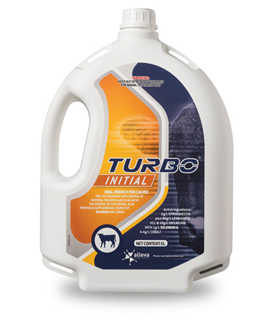Scours Simplified: Dealing with Loose (Back) Ends
- Mikayla Davison
- Sep 2, 2024
- 2 min read
As we head out of spring and we have more calves running about the place, it’s only going to be more common to see a few loose back-ends and weak calves. This bulletin is aimed at guiding you how to approach these issues as they happen.
Infectious causes of scour:
· E. coli
· Rotavirus
· Coronavirus
· Crypto
· Cocci
There can be nutritional causes of scour but these often self-resolve within a few days.
Diagnosis is a really important factor when dealing with scour outbreaks as each cause has a different treatment recommendation. Our SNAP tests are great for giving a fast and accurate answer for the first four causes. All you need to do is drop a sample into the clinic.
E. coli:
This is the most serious type of scour and occurs in the first 24-48 hours of birth. Calves will often be found flat-out and very dehydrated. This requires urgent treatment from a vet including intravenous antibiotics, anti-endotoxics and fluids.
Colostrum quality and quantity as well as hygiene at calving are often at the root of this problem. There are vaccines available for cows during the dry period to increase the immunity in the colostrum to the calf such as Biobos.
Rotavirus:
This is the most common cause in NZ. Often affecting calves in the first 7-10 days of life, calves will profusely scour in large volumes with variable other signs present.
Treatment revolves around maintaining adequate hydration and providing support through products such as Rotagen combo and oral electrolytes. This often means feeding a calf multiple feeds a day to ensure they stayed hydrated.
Treating with a NSAID (e.g. Melovem/Metacam) can help keep the calf drinking due to its pain relief effects.
Coronavirus:
Fairly rare a disease in New Zealand, this can look similar to Rotavirus as it can affect calves of a similar age.
Crypto:
Often affecting calves over 10 days old. Calves often scour with a pasty thick scour. Animals range in symptoms from apparently well to very dehydrated and sick. Products like Rotagen combo (above) with action against crypto can be used for treatment and prevention here.
Coccidiosis:
More of a consideration in older calves out at grass. Sudden onset diarrhoea which may contain blood, often off-feed, discomfort and more subtle signs like decreased weight gain. This is important to identify as even calves not showing signs will need to be treated as they are likely suffering with a burden of coccidiosis too but not yet showing signs. Treatment often involves using a product like Baycox but discussion with your vet is worth having to determine whether a coccidiostat (e.g. Deccox) would be a better alternative as a prevention.
General considerations:
All scouring animals have a high likelihood of becoming dehydrated due to scour and so should be supplemented with electrolyte feeds IN ADDITION to milk feeds.
Calves should be housed with those of a similar age – try not to bring older calves into a younger group.
Using a disinfectant boot dip between calf sheds is important to reduce the spread of pathogens.
Using a disinfectant which is licensed for all the pathogens is important too to reduce environmental levels of the bugs.
Separate sick calves from their healthy pen mates.

















Comments